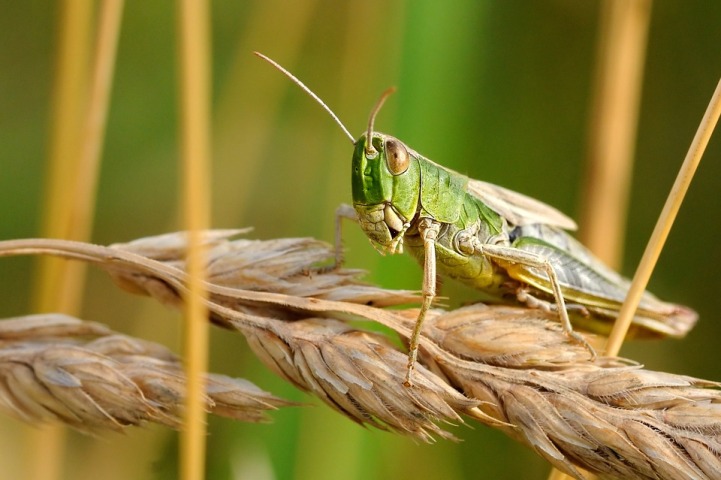UN agency concerned over locusts impacting East Africa's food security
The agency stressed that as favorable breeding conditions continue, the increase in locust swarms could last until June. And left unchecked, the numbers of crop-devouring insects could grow 500 fold by then.

Ethiopia, Kenya, and Somalia are dealing with desert locust swarms of “unprecedented size and destructive potential” that could spill over into more countries in East Africa, the United Nations Food and Agriculture Organization (FAO) warned on Monday.
Destroying hundreds of thousands of acres of crops, the outbreak is impacting the region’s food insecurity.
The UN agency urged for a collective campaign to deal with the crisis, concerned over the risk that the swarms spill over into more countries in East Africa, “if efforts to deal with the voracious pest are not scaled up across the region”.
Moreover, unusual climate conditions have favored rapid locust reproduction.
The agency stressed that as favorable breeding conditions continue, the increase in locust swarms could last until June. And left unchecked, the numbers of crop-devouring insects could grow 500 fold by then.
Facing an unprecedented threat
Kenya has not faced a locust threat of this magnitude in 70 years, FAO warned.
The outbreak of desert locusts, considered the most dangerous locust species, has also affected parts of Somalia and Ethiopia, the likes of which have not been seen on this scale in 25 years.
South Sudan and Uganda are not currently affected, but are at risk, FAO added.
In a press release issued on Monday, FAO Director-General QU Dongyu said the agency is activating fast-track mechanisms to support governments, warning that the situation is now of “international dimensions”.
"Authorities in the region have already jump-started control activities, but in view of the scale and urgency of the threat, additional financial backing from the international donor community is needed so they can access the tools and resources required to get the job done," Mr. Qu said.
Swarms potentially containing hundreds of millions of individual desert locusts can move 150 kilometers a day – devastating rural livelihoods. According to the UN agency, “given the scale of the current swarms, aerial control is the only effective means to reduce the locust numbers”.
FAO is assisting with forecasts, early warning, and alerts on the timing, scale, and location of invasions and breeding.
Mr. Qu also warned the response must include efforts to restore people’s livelihoods."Communities in Eastern Africa have already been impacted by extended droughts, which have eroded their capacities to grow food and make a living. We need to help them get back on their feet, once the locusts are gone," FAO’s Director-General said.
The UN is seeking $70 million to urgently support both pest control and livelihood protection operations in the three most affected countries.
Southwest Asia and the Red Sea area also affected
In addition, numerous desert locust swarms have been breeding in India, Iran, and Pakistan since June 2019. And some have migrated to southern Iran where recent heavy rains have nurtured a breeding ground that could generate swarms in the spring.
Egypt, Eritrea, Saudi Arabia, Sudan, and Yemen are also seeing substantial breeding activity that could see locust bands expand into swarms in the coming months, FAO added.
The agency concluded that it stands ready to leverage its expertise and facilitate a coordinated response.










